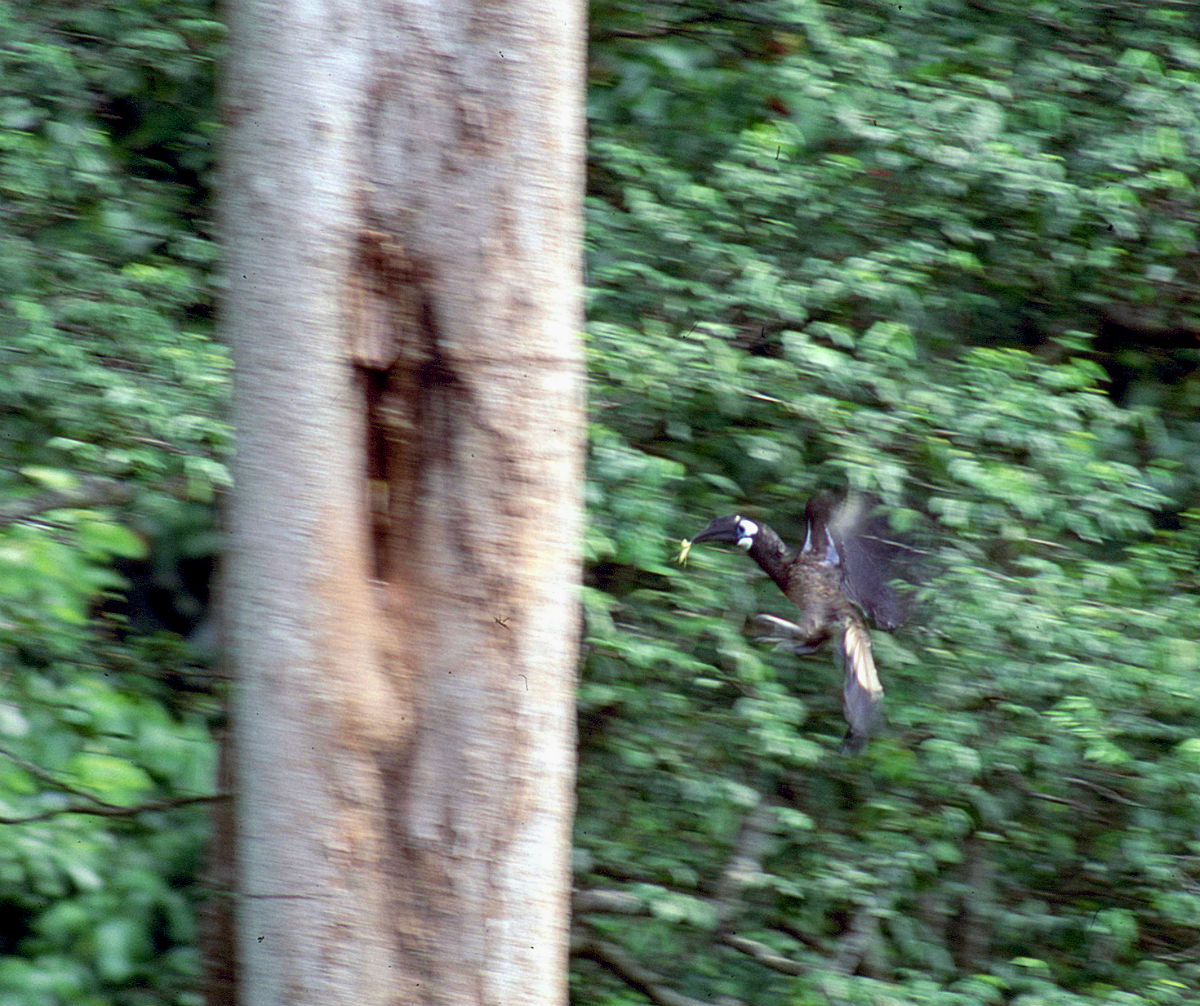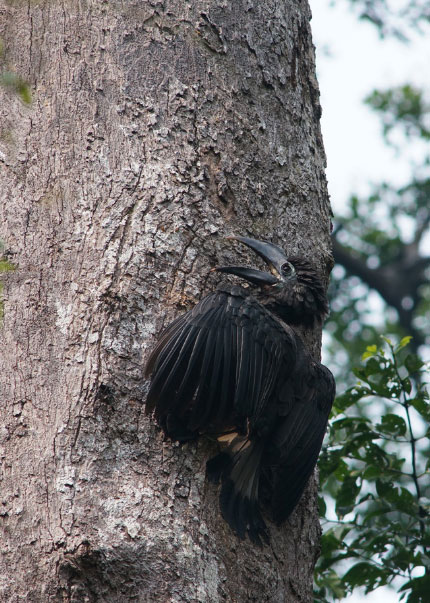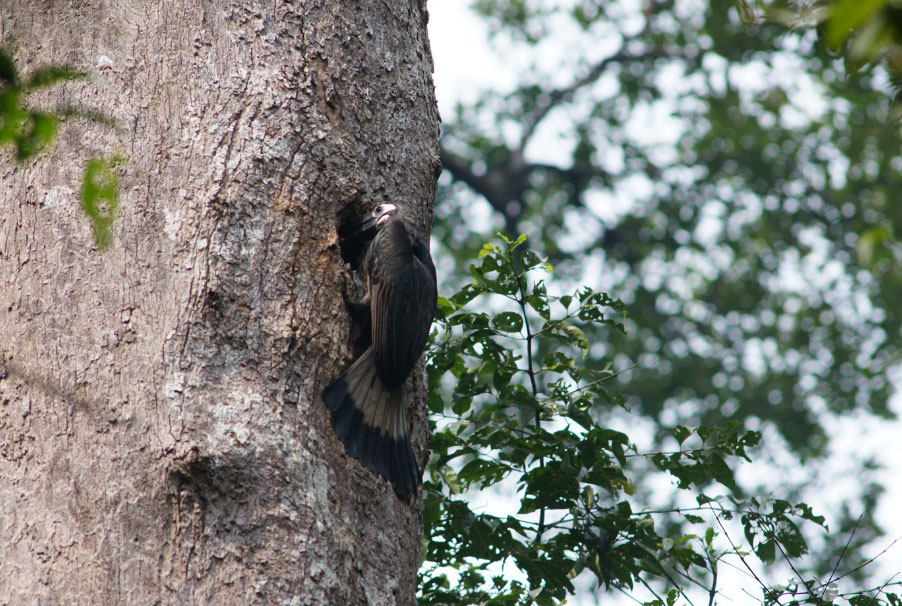Found in primary tropical rainforest, also mature secondary forest, from the coast into the hills at 750 m elevation, recorded up to 1,800 m. Prefers dense areas with closed canopy and many fruiting trees. It live in noisy and mobile groups of 3-15 birds, rarely up to 20.
It moves through the forest mainly at canopy level flying just short distances from tree to tree, and it feeds inside or just below the canopy. The food is mainly fruits, especially lipid-rich varieties such as Aglaia spectabilis, Dysoxylum spp (Meliaceae), recorded from southern Thailand; about 30 types of fruits have been identified and only about 10% of the diet is figs.
Takes animal food regularly, about 25% of the feeding time is spent actively hunting prey; it searches through the canopies and probes the bark to find cicadas, other invertebrates, lizards and frogs. Members in the group may combine to hunt prey or to chase competitors such as other hornbills, out of fruiting trees.
Sedentary and territorial, there are no reports of movements apart from immatures dispersing.




